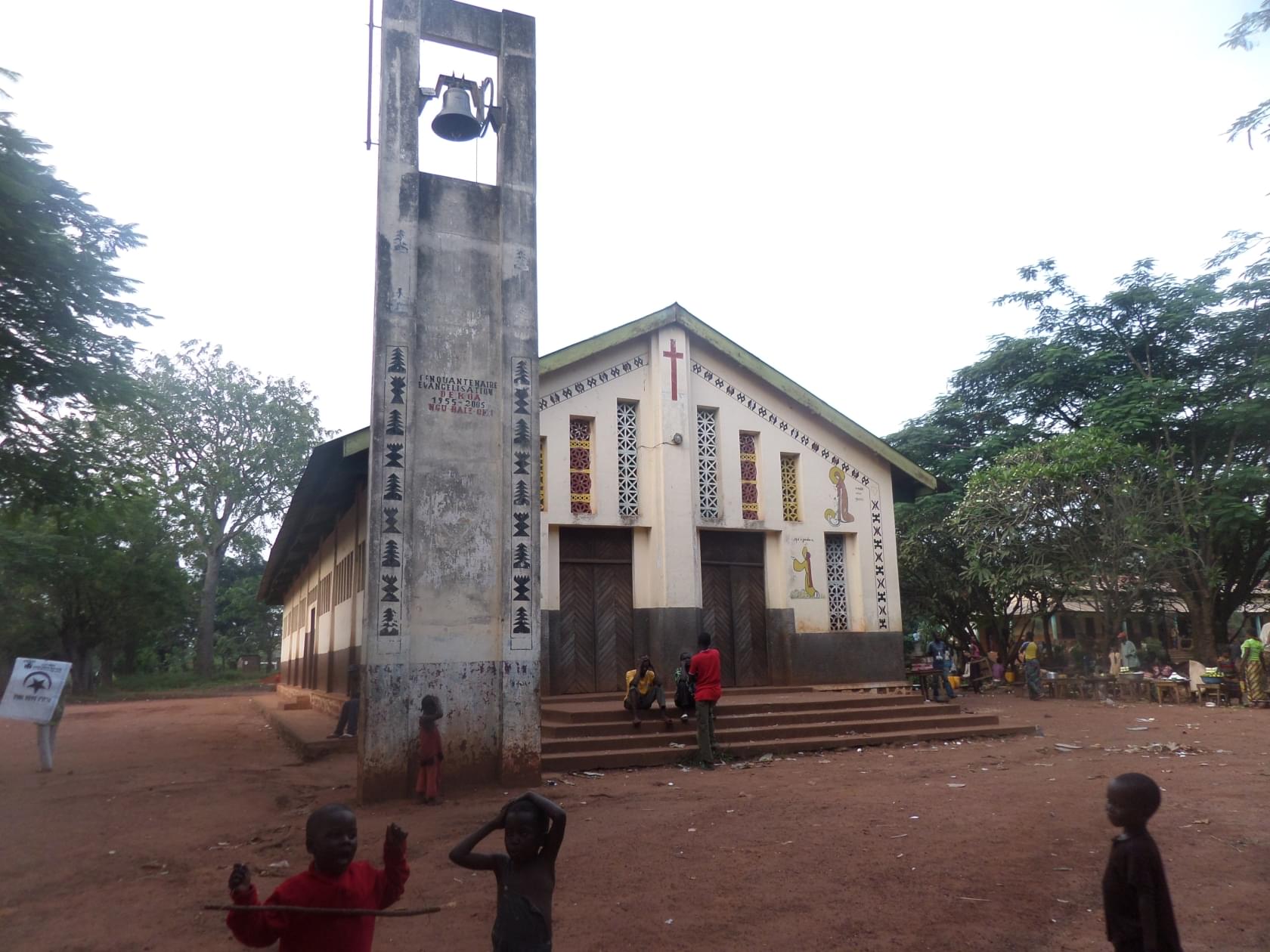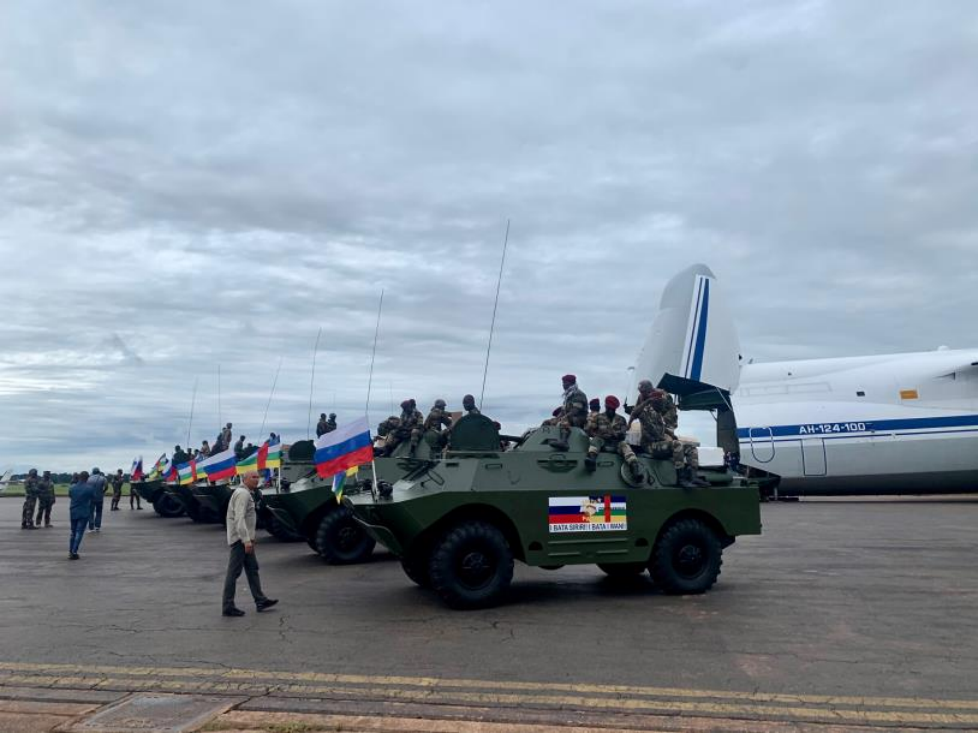|
Dekoa
Dekoa (Dékoua) is a sub-prefecture and town in the Kémo Prefecture of the south-eastern Central African Republic. History In the nineteenth century freebooter Rabih az-Zubayr brought Dekoa under his sway and made it a part of the Bornu Empire. In March 1899, the sultan captured and imprisoned the explorer Ferdinand de Béhagle at Dekoa. Béhagle was subsequently hanged after the French battled the sultan's troops at Kouno in October of that year. Civil war On 28 December 2012 Séléka rebels took control of Dekoa. On 8 April 2014 Anti-balaka attacked ex-Seleka positions in Dekoa resulting in 30 deaths. On 17 August 2018 FACA was deployed in Dekoa. Three UN peacekeepers from Burundi were killed in Dekoa and Bakouma on December 26, 2020, one day before the 2020 Central African general election. Three Anti-balaka The Anti-balaka is an alliance of militia groups based in the Central African Republic in the early 21st century said to be composed primarily of Christians. How ... [...More Info...] [...Related Items...] OR: [Wikipedia] [Google] [Baidu] |
Rabih Az-Zubayr
Rabih az-Zubayr ibn Fadl Allah or Rabih Fadlallah ( ar, رابح فضل الله ,رابح الزبير ابن فضل الله), usually known as Rabah in French (c. 1842 – April 22, 1900), was a Sudanese warlord and slave trader who established a powerful empire east of Lake Chad, in today's Chad. Born around 1842 to an Arabic tribe in Halfaya Al-Muluk, a suburb of Khartoum, he first served with the irregular Egyptian cavalry in the Ethiopian campaign, during which he was wounded. When Rabih left the army in 1860s, he became the principal lieutenant of the Sudanese slaveholder Sebehr Rahma. Lieutenant of al-Zubayr (1870–1879) In the 19th century, Khartoum had become a very important Arab slave market, supplied through companies of ''Khartumi'' established in the region of Bahr el Ghazal, where they resided in zarības ( ar, زريْـبـة), thornbush-fortified bases kept by bāzinqirs (firearm-equipped slave soldiers). The warlord and slaveholder al-Zubayr Rahma M ... [...More Info...] [...Related Items...] OR: [Wikipedia] [Google] [Baidu] |
Sub-prefectures Of The Central African Republic
The prefectures of the Central African Republic are divided into 71 sub-prefectures (french: sous-préfectures). The sub-prefectures are listed below, by prefecture. Bamingui-Bangoran Prefecture * Bamingui * Ndélé Bangui Commune * Bangui Basse-Kotto Prefecture * Alindao * Kembé * Mingala * Mobaye * Satema * Zangba Haut-Mbomou Prefecture * Djemah * Obo * Zemio * Bambouti * Mboki Haute-Kotto Prefecture * Bria * Ouadda * Yalinga Kémo Prefecture * Dekoa * Sibut * Mala * Ndjoukou Lobaye Prefecture * Boda * Mbaiki * Mongoumba * Boganangone * Boganda Mambéré-Kadéï Prefecture * Berbérati * Carnot * Gamboula * Amada-Gaza * Dédé-Makouba * Gadzi * Sosso-Nakombo Mbomou Prefecture * Bakouma * Bangassou * Rafai * Gambo * Ouango Nana-Grébizi Economic Prefecture * Kaga-Bandoro * Mbrès Nana-Mambéré Prefecture * Baboua * Baoro * Bouar * Abba Ombella-M'Poko Prefecture * Bimbo * Boali * Damara * Bogango ... [...More Info...] [...Related Items...] OR: [Wikipedia] [Google] [Baidu] |
Bakouma
Bakouma is a sub-prefecture in the prefecture of Mbomou in Central African Republic. The area is known for its prosperity of mineral resources which have for a long time remained unexploited. History Bakouma was founded in September 1892 when the Belgians, led by Commander Georges Adolphe Balat and Captain Georges Le Marinel set up a military post on the site. It became a part of the French Upper Oubangui in July 1894. Bakouma became a district under the French rule in 1944 and on 23 January 1961, the region eventually became a Sous-Préfecture in the Mboumo prefecture in the newly formed Central African Republic. . The Lengo Petroglyphs are located near Bakouma. In a uranium survey in 1959–1961, phosphatic sediments were discovered near Bakouma. The phosphates are characterized by their high uranium content, which are the highest in sub-Saharan Africa. Further feasibility studies showed that in the area, there are 41 million pounds of U3O8 with an average grade of 0.27% (w ... [...More Info...] [...Related Items...] OR: [Wikipedia] [Google] [Baidu] |
Anti-balaka
The Anti-balaka is an alliance of militia groups based in the Central African Republic in the early 21st century said to be composed primarily of Christians. However, some church leaders have contested the claimed exclusively Christian character of such groups. The Tony Blair Faith Foundation and journalist Andrew Katz have noted that animists also participate in Anti-balaka groups. This militia formed in the Central African Republic after the rise to power of Michel Djotodia in 2013.C.Africa militia is an enemy of peace: French commander apa.az, recovered 14 March 2014 Amnesty International reported in 2015 that some members of anti-balaka groups have [...More Info...] [...Related Items...] OR: [Wikipedia] [Google] [Baidu] |
Séléka
Séléka CPSK-CPJP-UFDR was an alliance of rebel militia groups that subjugated the Central African Republic (CAR) on 24 March 2013. After its official dissolution in September 2013, the remaining rebel groups became known as Ex-Séléka. Séléka leader Michel Djotodia became the nation's president from March 2013 until his resignation in January 2014. Members of Séléka were almost all Muslim.The Economist: "The Central African Republic - Ever darker" 8 November 2013BBC: "Central African Republic: Religious tinderbox" 4 November 2013 Name The word ''seleka'' ...[...More Info...] [...Related Items...] OR: [Wikipedia] [Google] [Baidu] |
Kaga-Bandoro
Kaga-Bandoro is a market town and capital of the Nana-Grébizi prefecture of the Central African Republic. It represents the seat of the Roman Catholic Diocese of Kaga–Bandoro. History On 25 December 2012 rebels from Séléka coalition took control of Kaga-Bandoro. On 14 December 2015 rebels announced independence of Republic of Logone in Kaga-Bandoro. In September 2016 Kaga-Bandoro was reported to be under joint control of MPC and FPRC armed groups. In December 2019 four armed groups were reportedly present in Kaga-Bandoro: MPC, FPRC, Anti-balaka and UPC. On 10 April 2021, the FACA and their Russian allies entered the city of Kaga-Bandoro. This has caused the fleeing of the rebel forces previously occupying the town to the north towards Kabo and Batangafo. Climate Köppen-Geiger climate classification system classifies its climate as tropical wet and dry (Aw). See also * List of cities in the Central African Republic A ''list'' is any set of items in a ro ... [...More Info...] [...Related Items...] OR: [Wikipedia] [Google] [Baidu] |
Burundi
Burundi (, ), officially the Republic of Burundi ( rn, Repuburika y’Uburundi ; Swahili: ''Jamuhuri ya Burundi''; French: ''République du Burundi'' ), is a landlocked country in the Great Rift Valley at the junction between the African Great Lakes region and East Africa. It is bordered by Rwanda to the north, Tanzania to the east and southeast, and the Democratic Republic of the Congo to the west; Lake Tanganyika lies along its southwestern border. The capital cities are Gitega and Bujumbura, the latter being the country's largest city. The Twa, Hutu and Tutsi peoples have lived in Burundi for at least 500 years. For more than 200 of those years, Burundi was an independent kingdom, until the beginning of the 20th century, when it became a German colony. After the First World War and Germany's defeat, the League of Nations "mandated" the territory to Belgium. After the Second World War, this transformed into a United Nations Trust Territory. Both Germans and Belgians rul ... [...More Info...] [...Related Items...] OR: [Wikipedia] [Google] [Baidu] |
Central African Armed Forces
The Central African Armed Forces (french: Forces armées centrafricaines; FACA) are the armed forces of the Central African Republic and have been barely functional since the outbreak of the civil war in 2012. Today they are among the world's weakest armed forces, dependent on international support to provide security in the country. In recent years the government has struggled to form a unified national army. It consists of the Ground Force (which includes the air service), the gendarmerie, and the National Police. Its disloyalty to the president came to the fore during the mutinies in 1996–1997, and since then has faced internal problems. It has been strongly criticised by human rights organisations due to terrorism, including killings, torture and sexual violence. In 2013 when militants of the Séléka rebel coalition seized power and overthrew President Bozizé they executed many FACA troops. History Role of military in domestic politics The military has played an import ... [...More Info...] [...Related Items...] OR: [Wikipedia] [Google] [Baidu] |
Ferdinand De Béhagle
Jean Jacques Marie Ferdinand de Béhagle (18 July 1857 – 15 October 1899) was a French explorer of Africa. He served with the colonial service in Algeria and travelled in the Congo and Ubangi region. While attempting to find a viable land route from the Congo to the Mediterranean via Chad he was taken prisoner by Rabih az-Zubayr and hanged. Early years Jean Jacques Marie Ferdinand de Béhagle was born in Ruffec, Charente on 18 July 1857. He became an officer of the merchant marine. He was then employed as administrator of mixed communes in Algeria. He served in Algeria from 1885 to 1891. On 15 September 1885 he married Rosine Dehoux in Bône, Algeria. In 1892, de Béhagle was a volunteer member of the exploratory expedition organized by Casimir Maistre, François Joseph Clozel and Albert Bonnel de Mézières that followed the expedition of Paul Crampel. The mission ascended the Congo River, then the Ubangi River, and explored the divide between the Chad and Congo Basins. Af ... [...More Info...] [...Related Items...] OR: [Wikipedia] [Google] [Baidu] |
Battle Of Kouno
The battle of Kouno was an inconclusive battle that took place between French troops and the Muslim army led by Rabih az-Zubayr, in the context of French colonial expansion in Africa, and more precisely in Chad. On August 16, 1899 the leader of the Gentil Mission, the Captain Émile Gentil, was informed of the utter annihilation by the warlord Rabih az-Zubayr of the Bretonnet-Braun Mission at Togbao on July 17. Gentil knew that the Forreau-Lamy and Voulet missions were marching on southern Chad, respectively from Algeria and Niger. His primary goal was to unite his forces with those of the Voulet-Chanoine Mission; but first he felt he had to free himself of Rabih, and so left on October 23 Fort-Archambault, leaving only twenty men under the command of the '' maréchal de logis'' Bauguies. Gentil started navigating the Chari upriver, counting on three cannons, while the steamboat ''Léon-Blot'' and their barge had other two. A column formed by Cointet and Lamothe's men, under t ... [...More Info...] [...Related Items...] OR: [Wikipedia] [Google] [Baidu] |





